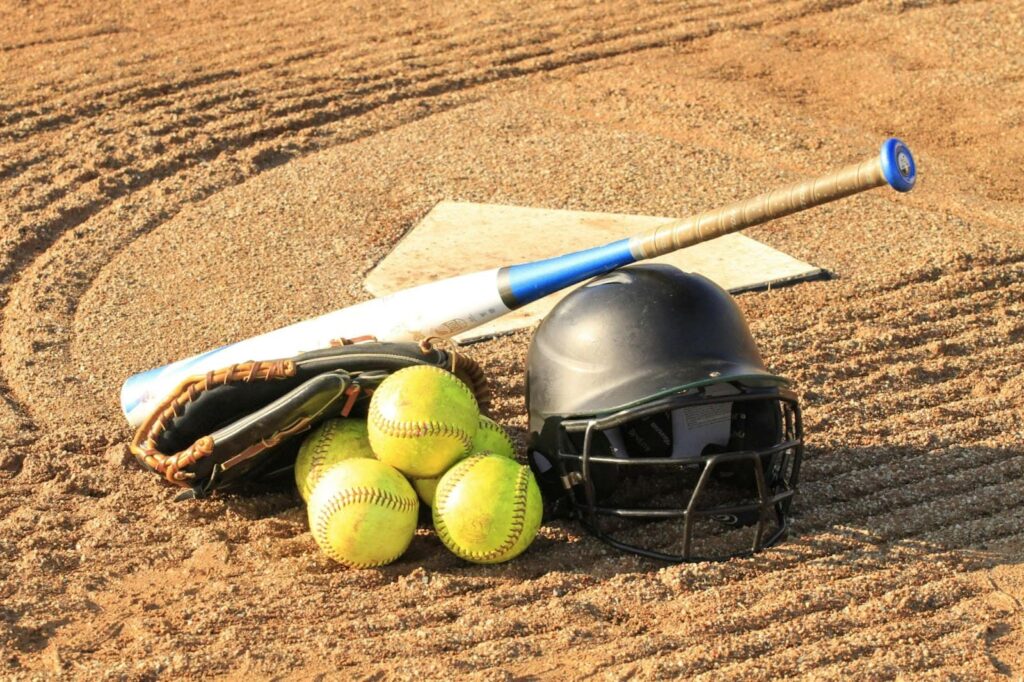Baseball and softball have been compared for years. Are these variations of the same game? Are these two separate games with unique rules? Both sports require certain skills and physical strength. At the same time, they have different pitching styles and paces of play. Knowing what sets two sports apart can help you enjoy the game and make more accurate bets at GGBet Canada.
Primary Differences Between Softball & Baseball
When taking a closer look at softball and baseball, you can learn what sets them apart. Ball size and field layout are probably the most noticeable differences. But there are many more elements of the game to consider. Now it’s time to explore the main differences in detail.
Field Size and Ball Dimensions
One of the most visible differences between the two sports is the ball itself. A softball is larger, usually 30.48 cm in circumference. A baseball has just 22.86 cm. This change has a direct impact on the swing and contact approach. Softball hitters often use a slightly more exaggerated uppercut to lift the larger ball. Baseball players create backspin with a more level swing to send the ball as far as possible. The fields are also different in size. Here are the main dimensions:
- Baseball (121.92×27.43×18.44 m);
- Softball (67.06×18.29×13.11 m).
Softball has smaller dimensions, which usually requires quicker reactions and takes less time for plays. Ground balls become more urgent, while baserunners have less distance to cover.
Pitching Style and Strategy
Pitching is probably the most fundamental difference. In baseball, pitchers throw overhand from a raised mound, using a combination of speed, spin, and movement to strike batters out.
Softball pitchers throw underhand from a flat circle. While that may sound easier, don’t be fooled. Windmill motion can generate speeds up to 70 mph, and from a much shorter distance, that can feel equivalent to a 95 mph baseball pitch. With only seven innings in softball, a dominant pitcher can often go the full distance. They can place more value on having an ace who can maintain stamina and keep the game under control.
Rules and Offensive Strategy
In softball, teams often rely on “small ball” tactics, such as bunting, slap hitting, and aggressive base running. Despite power hitting, they focus on speed and precision. Baseball has leaned into the long ball. Home runs and extra-base hits are more common, and “small ball” tactics are generally less popular than ever.
The rules surrounding bunting vary. In softball, a batter who shows a bunt and doesn’t pull the bat back may still be safe from a strike call. In baseball, failing to retract the bat on a bunt attempt almost always results in a strike.

Game Speed and Pace of Play
Thanks to the shorter base paths and smaller field, softball tends to move at a faster pace. There’s less time to react, less ground to cover, and decisions must be made in a split second. Hitters who use slap techniques stay active before the ball leaves the pitcher’s hand.
Baseball’s larger field requires a more strategic approach. Players must have strong arms to make long throws, while defenders need to be in the right position to cover more territory. That extra space gives slightly more time to react, but also requires more physical power.
Equipment Differences
The gear used in both sports is customized to the needs of the game. Softball bats are generally longer and lighter, designed for control and speed. Baseball bats vary more depending on the level of play. Aluminum bats are widely used in youth championships. Professional players use wood bats. Gloves also differ. Softball gloves have larger pockets to handle the bigger ball, while baseball gloves are slightly smaller, designed for catching balls and making quicker transfers.
So Which One is Harder?
Softball or baseball: which is more difficult? The answer depends on how you look at it. Softball’s shorter distances, faster pace, and unique pitching style require a quicker reaction. Baseball’s physical demands and longer games challenge a player’s stamina. In the end, both sports require immense skill, preparation, and mental toughness.